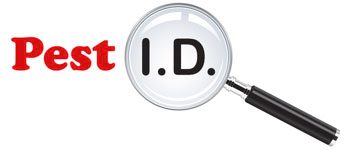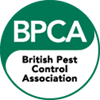The thought of a bed bug infestation can send shivers down anyone’s spine. These tiny, nocturnal pests can cause discomfort and stress. Preventing a bed bug infestation requires a combination of diligence, awareness, and strategic measures. In this article, we’ll explore effective strategies to help you keep these unwanted visitors at bay and ensure a peaceful night’s sleep.
How to Check for Bed Bugs:
This is the first step before then taking preventative steps. We recommend educating yourself on bed bug signs – understanding the signs of a bed bug infestation is crucial for early detection. Look out for tiny reddish-brown bugs, small white eggs, shed exoskeletons, or small black faecal spots on bedding and furniture.
If a current infestation already appears underway, check out our specialist bed bug page and hire our friendly experts to help.
Regular Cleaning and Decluttering:
A cluttered environment provides numerous hiding spots for bed bugs. Regularly clean and declutter your living spaces, paying attention to areas under the bed, in closets, and around furniture. Minimising hiding spots makes it more challenging for bed bugs to establish a presence.
Protect Your Mattress:
Encase your mattress and box spring with bed bug-proof covers. These covers create a barrier that prevents bed bugs from infesting your mattress, making it easier to spot and eliminate any potential invaders.
Inspect Second-Hand Furniture:
Before bringing second-hand furniture into your home, thoroughly inspect it for any signs of bed bugs. Check seams, crevices, and folds. If in doubt, consider treating the furniture with heat or insecticides before bringing it indoors.
Be Cautious When Travelling:
Bed bugs are notorious hitchhikers, often finding their way into luggage during travel. When staying in hotels or other accommodations, inspect the room for signs of bed bugs. Keep luggage elevated and away from the bed, and upon returning home, unpack and launder clothing promptly.
Regular Vacuuming:
Vacuuming is an effective way to remove bed bugs and their eggs from surfaces. Pay special attention to seams, folds, and cracks in furniture and around the bed. Empty the vacuum cleaner bag or canister outside to prevent any potential escape.
Seal Entry Points:
Seal cracks, gaps, and crevices in walls, floors, and furniture to eliminate potential entry points for bed bugs. Silicone sealant and caulking are effective in sealing these openings and preventing infestations.
Laundry Practices:
Regularly wash bedding, curtains, and any other washable items in hot water. The high temperature kills bed bugs and their eggs. Drying items on the hottest setting is an additional measure to ensure their elimination.
Avoid Bringing Used Items Indoors:
Be cautious when acquiring used items, such as clothing, from unknown sources. Inspect and launder these items thoroughly before introducing them into your home.
Utilise Bed Bug Interceptors:
Place bed bug interceptors under the legs of your bed. These devices trap bed bugs attempting to climb onto the bed, preventing them from reaching you during the night.
Steam Cleaning:
Steam cleaning is an effective method for killing bed bugs on surfaces. High temperatures from steam can penetrate hiding spots and eliminate bed bugs and their eggs. Use a steamer on mattresses, furniture, and carpeted areas.
Professional Inspection:
If you suspect a bed bug infestation or notice signs of their presence, consider seeking professional pest control services. Bed bugs can be challenging to eliminate completely without the expertise and specialised tools used by professionals.
Summary
Preventing a bed bug infestation requires a proactive and thorough approach. By incorporating these strategies into your routine, you can significantly reduce the likelihood of bed bugs taking up residence in your home. Early detection and swift action are key components of effective bed bug prevention, allowing you to enjoy a pest-free and peaceful living environment.








